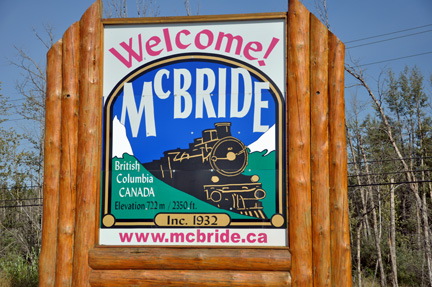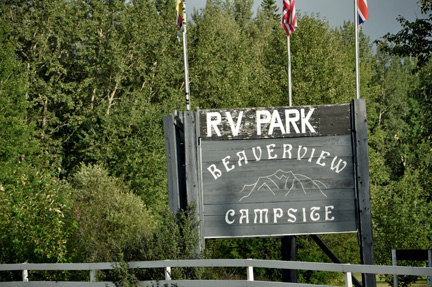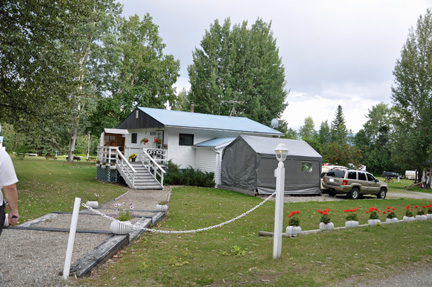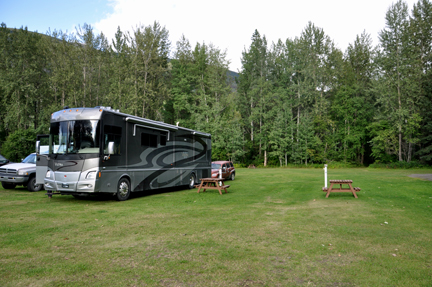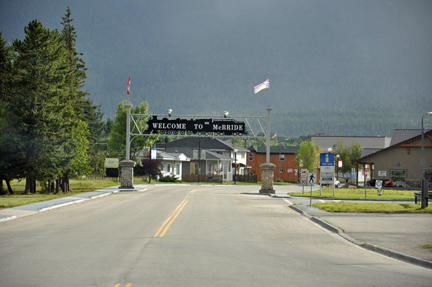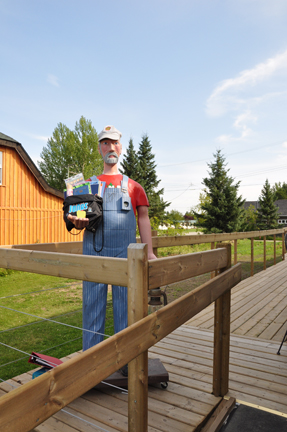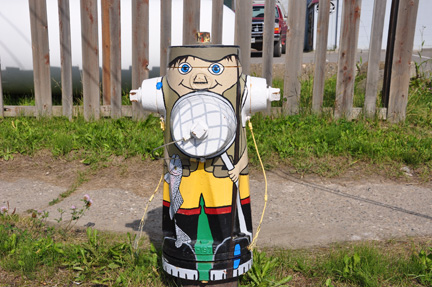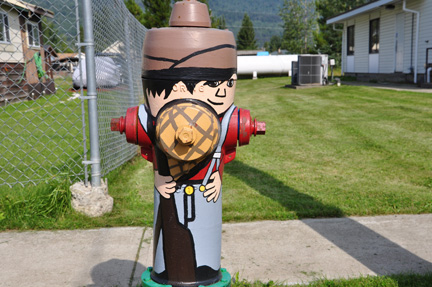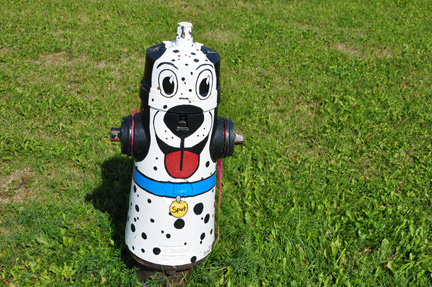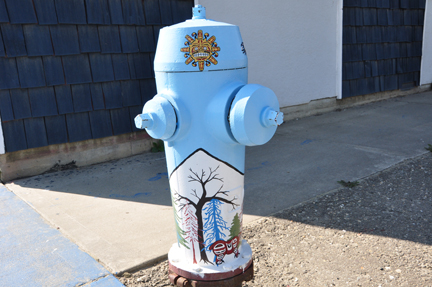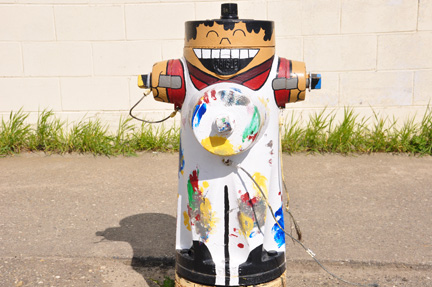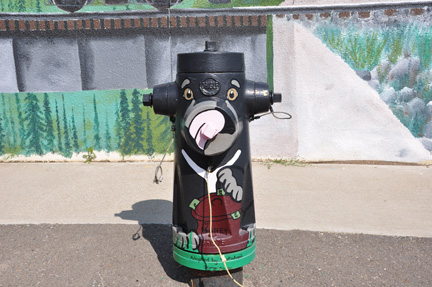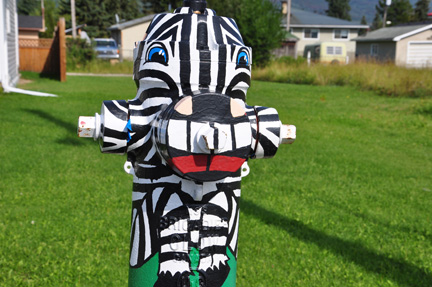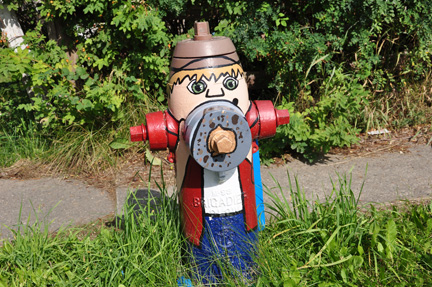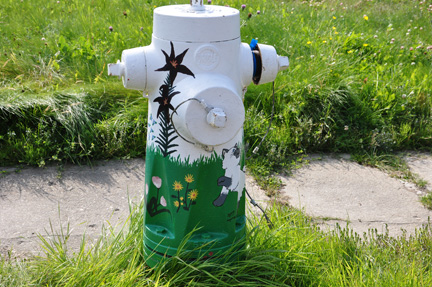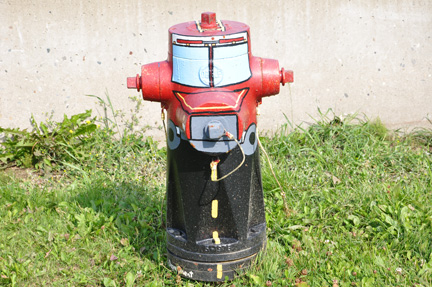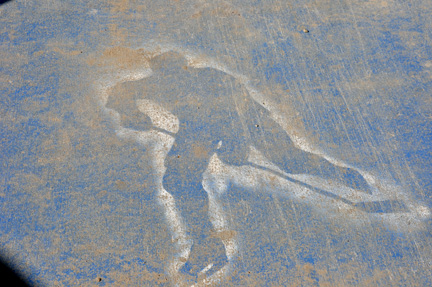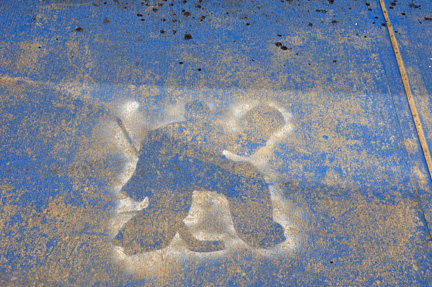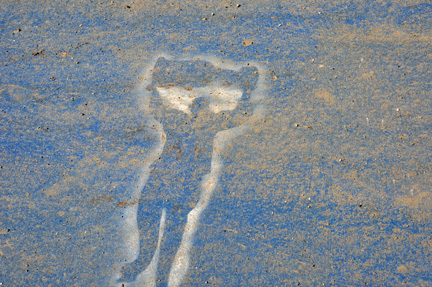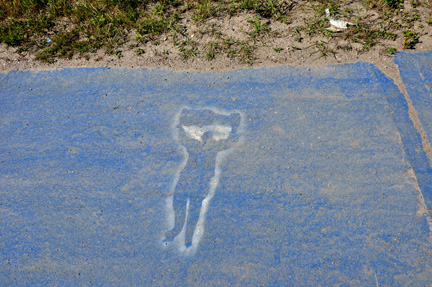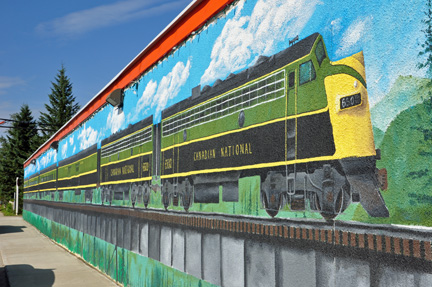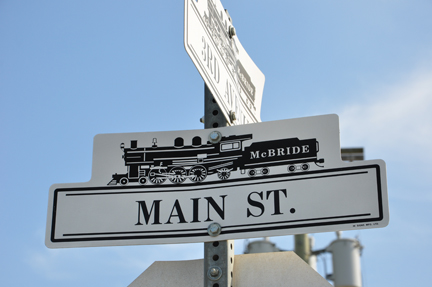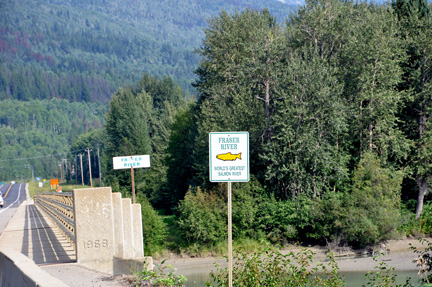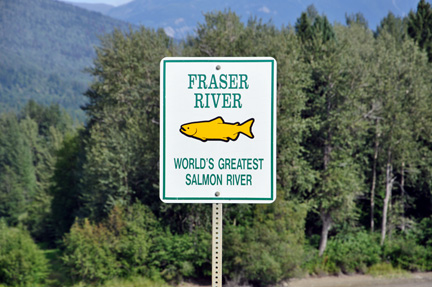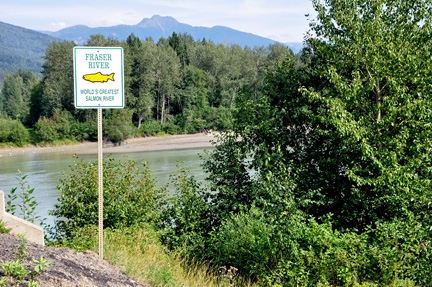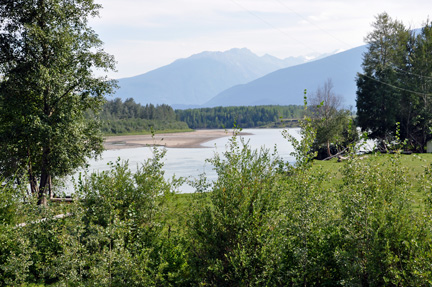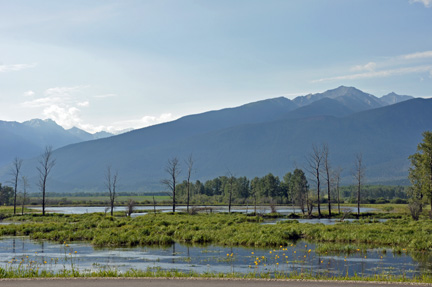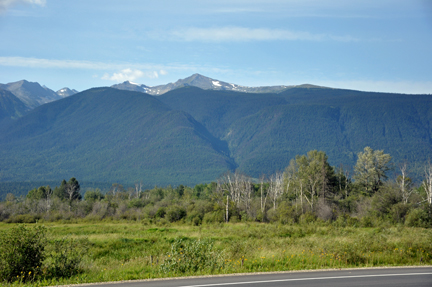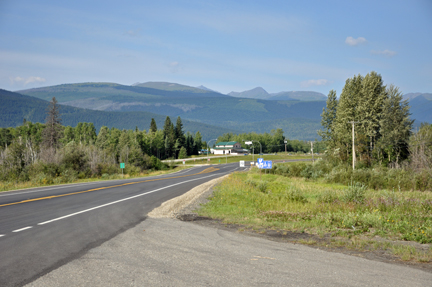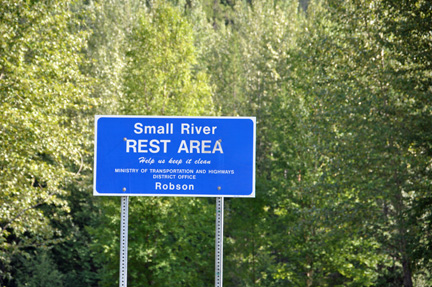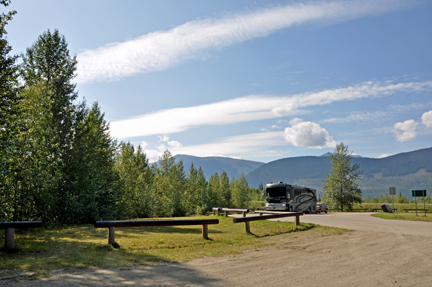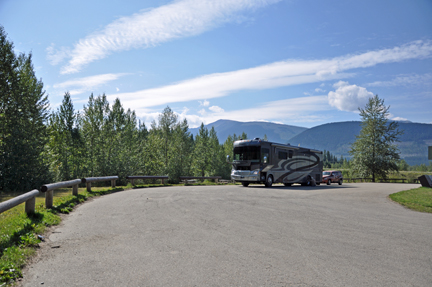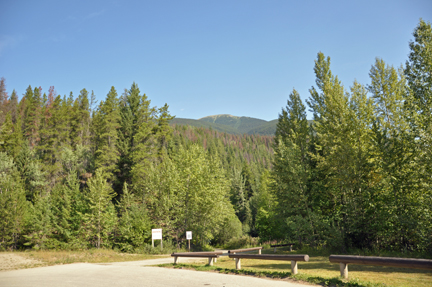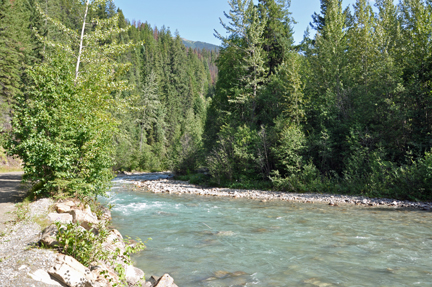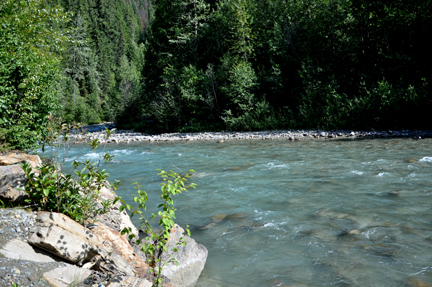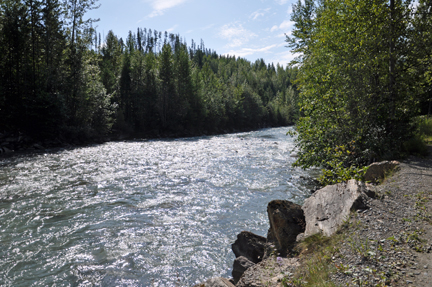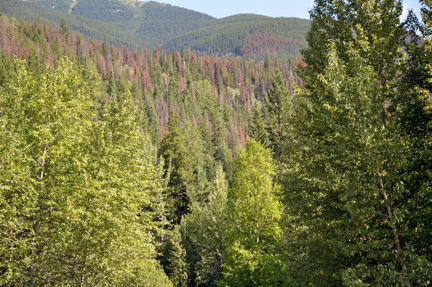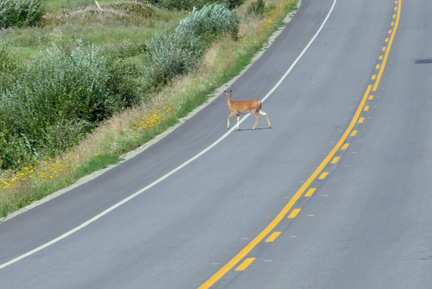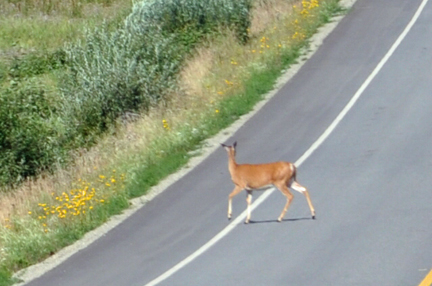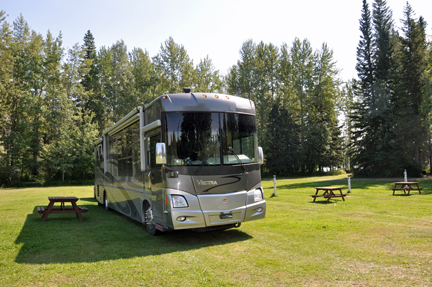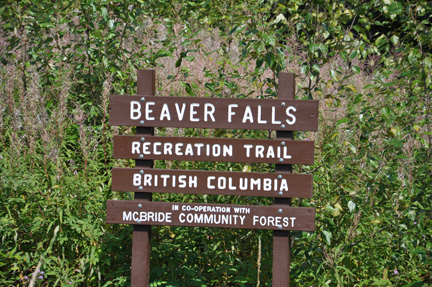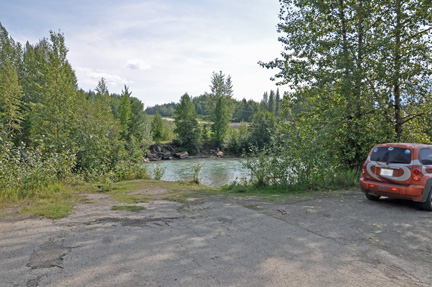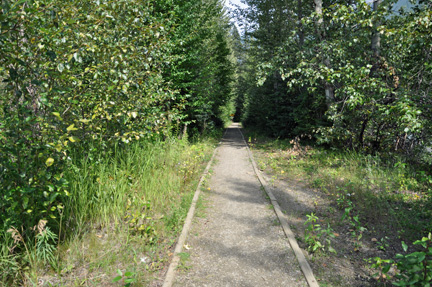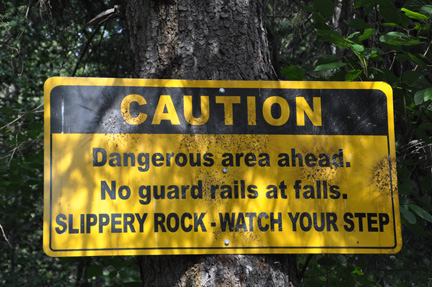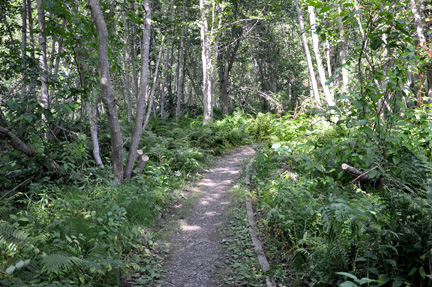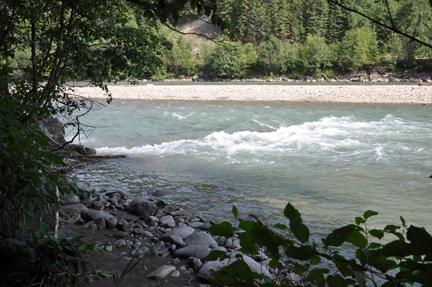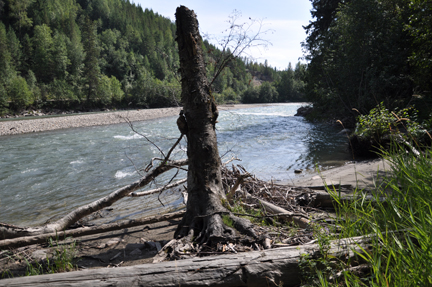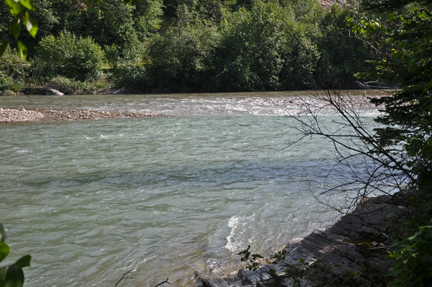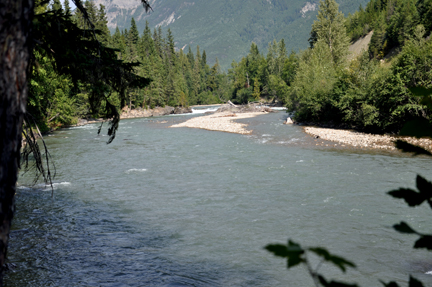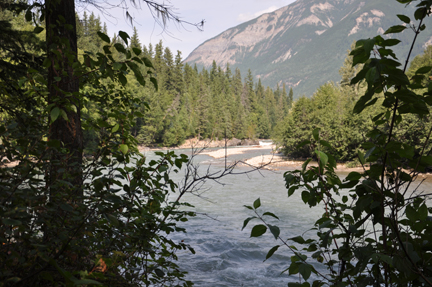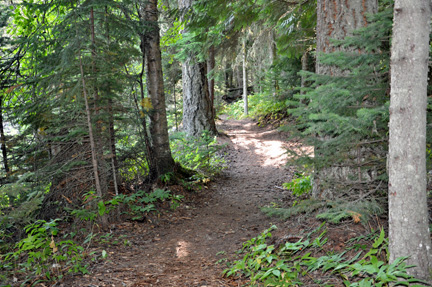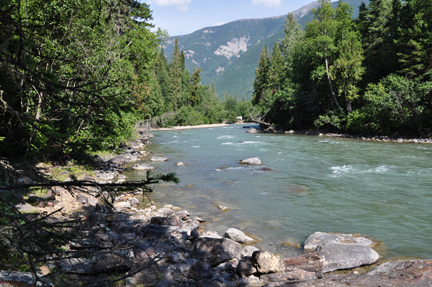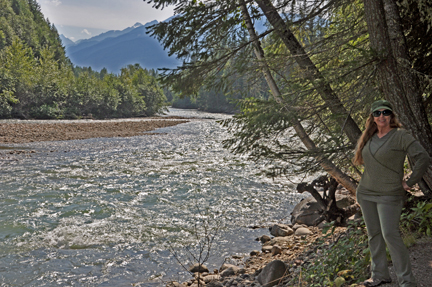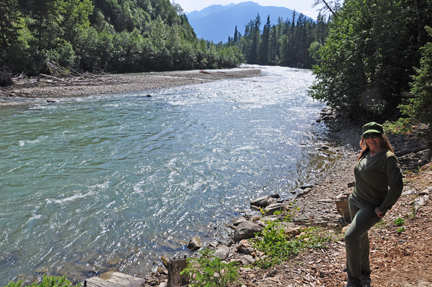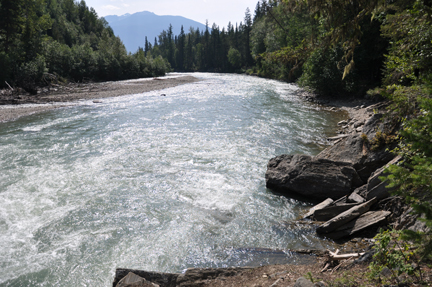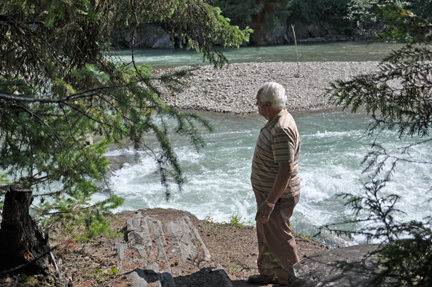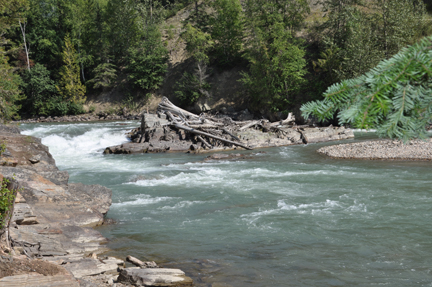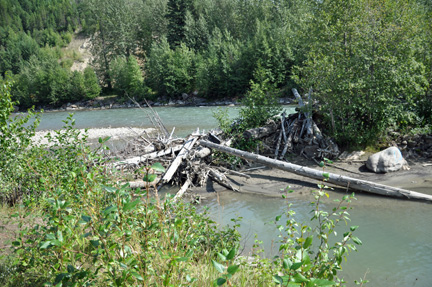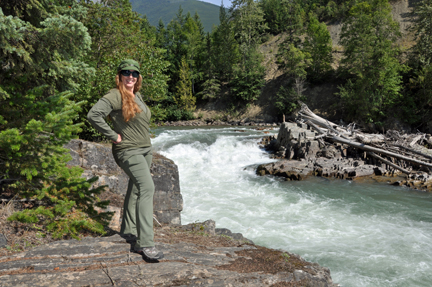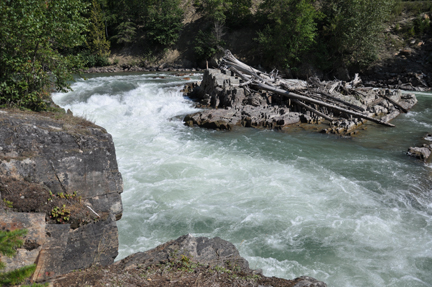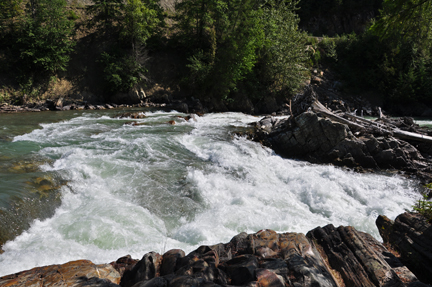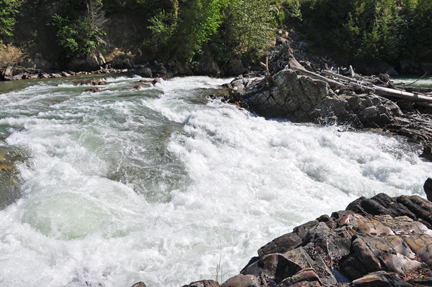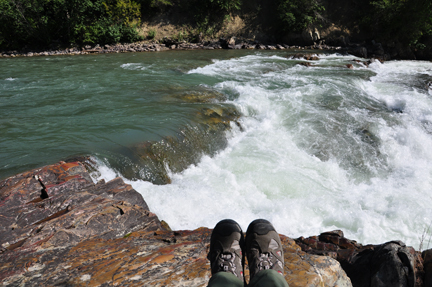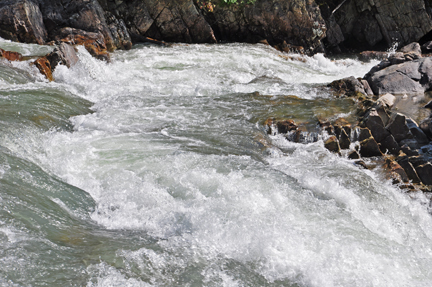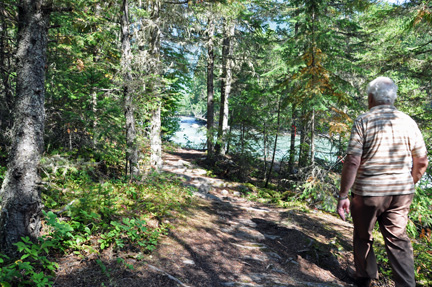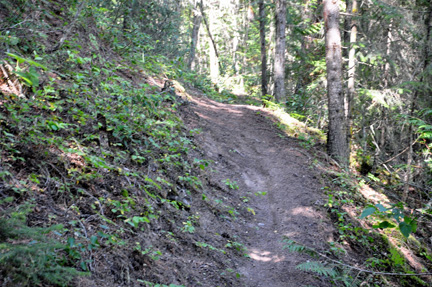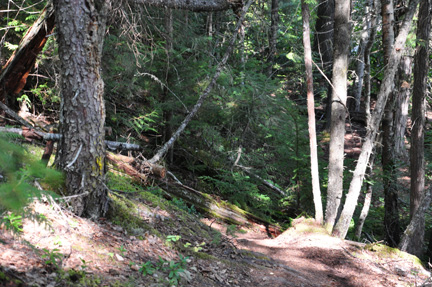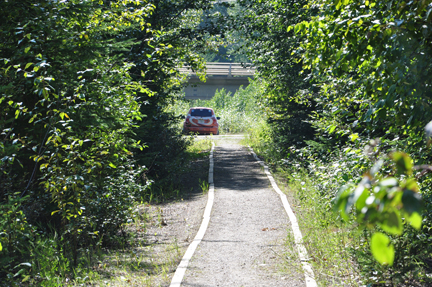| The town of McBride
does NOT have a car wash - bad news for RVers. But there
were lots of hiking trails, fishing, and mountain biking in this beautiful
area. |
|
| Beaverview RV Park
was a nice looking campground, but did not have a lot of sites. It had a
nicely landscaped office, pull-through grassy sites, water and electric
hook-ups, no sewers, no cable, tent sites with fire pits, free Wi-Fi, clean
washrooms, free hot showers, free sani-dump, and laundromat, plus firewood
and horseshoes. Limited TV stations - 8 actually but not ABC. No washing
of vehicles. |
|
|
Below: The new yard of
Lee and Karen Duquette, the two RV Gypsies - August 23, 2009 |
|
|
|
Below: Lee and Karen Duquette
enjoyed the art walk through the city of McBride which exhibited examples
of the fantastic artwork created by artisans from the Whistle Stop Gallery
via painted fire hydrants. |
|
|
|
|
|
|
|
|
|
|
Below: The sidewalks were
blue with hockey players on them |
|
|
|
|
Below: A painting on a building in
the city |
Below: Street signs had trains on them
too |
|
|
| There are 7 river
systems flowing in the BC portion of the Rocky Mountain Trench. The only
river completely in British Columbia is the largest one, the Fraser River.
It flows from its source high in the mountains about 50 km from the Yellowhead
Highway near Lucerne, then westerly to the trench of Tete Juane, then northwesterly
through the beautiful Robson Valley to Prince George and its confluence
with the Nechako River. Then it travels in a southwesterly direction through
the Fraser Canyon. At Hope, it turns and flows west to Vancouver and the
Pacific Ocean. The Fraser River was a major transportation route when the
Overlanders came in search of the gold fields in 1862. |
|
|
|
|
| Below: The Two
RV Gypsies left McBride the next day and of course, Karen Duquette took
photos through the closed window of the moving RV. (The window was NOT
made to open) |
|
|
|
| OH NO !!!!
After driving about 30 miles, Lee Duquette heard a very LOUD BANG, so he
drove slowly and carefully until he could find a rest area big enough for
their RV to fit in. Then they stopped to investigate the problem. One of
the inner tires blew. While Lee Duquette was pumping air into the tire,
Karen Duquette took a walk around the area and photographed a beautiful
river. |
|
|
|
|
|
|
|
|
|
| Below: Lee Duquette
determined that the tire needed to be replaced, so he slowly drove back
to McBride. On the way back to McBride, a deer crossed the road in front
of the RV. |
|
|
| Below: Oh NO !!!
The Goodyear Garage in McBride was closed, and the only place that could
fix the tire could not schedule the repair until the next day, so Lee and
Karen Duquette returned to the campground. AWO had space to herself. (note:
AWO stands for "All We Own" because it is the only home
that Lee and Karen Duquette have. They sold their house in Florida when
they became the two RV Gypsies.) |
|
| Below: In the morning, AWO was put in for repair,
and Lee and Karen Duquette decided to go to Beaver Falls in their toad. |
|
|
| Below: Karen Duquette
was looking left and photographing the above sign. Lee Duquette was looking
left too, even though he was driving the toad. Then suddenly Lee hit the
brakes. The road had ended and there was a drop down into the river. Good
thing Lee looked forward in time and had good reflexes. It would not have
been nice if they had driven into the river. All's well that end's well!
Note to Drivers - Keep your eyes on the road at all times! |
|
Below: All was well, so
Lee and Karen Duquette walked down the path to Beaver Falls. |
|
|
|
|
|
|
|
|
|
|
|
|
|
|
|
|
|
|
Below: Beaver Falls was
small, but still a strong, powerful, beautiful waterfall. |
|
|
|
|
| Below: After a short time, it
was time to leave because Lee Duquette was not feeling very well, and the
hike was a strain on him. |
|
|
|
|
